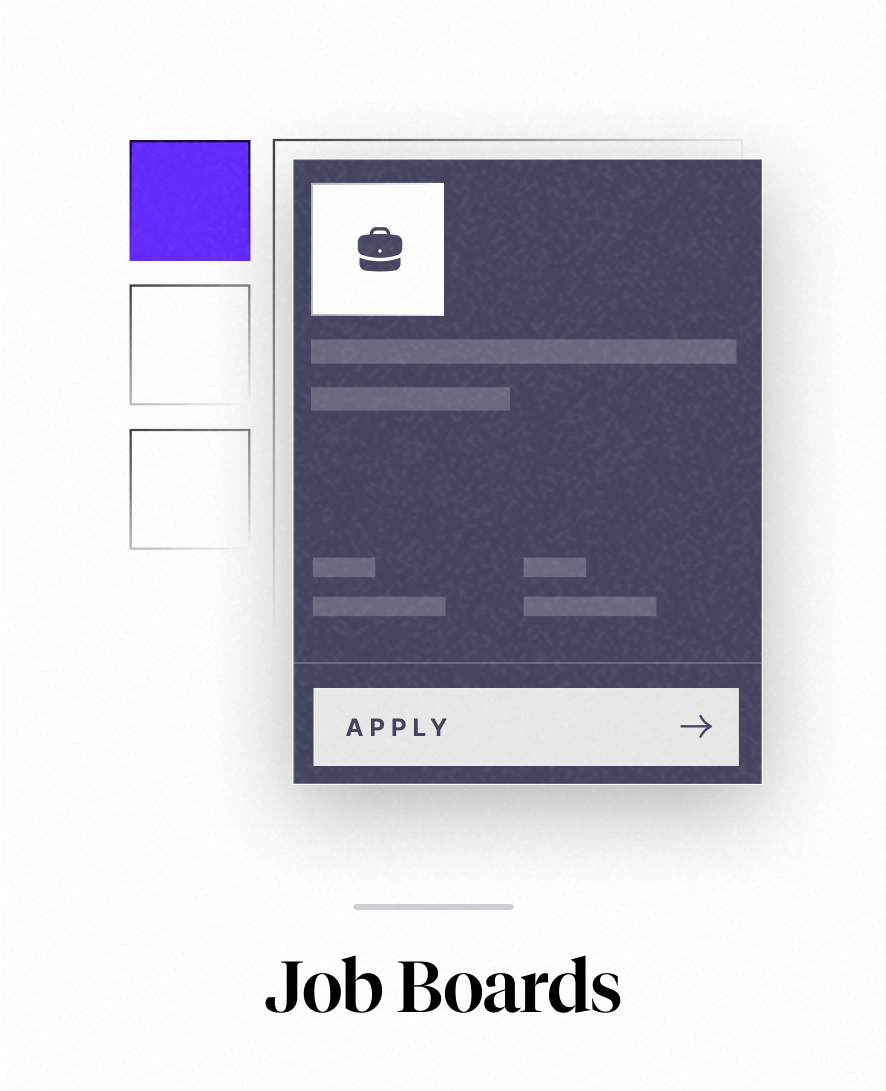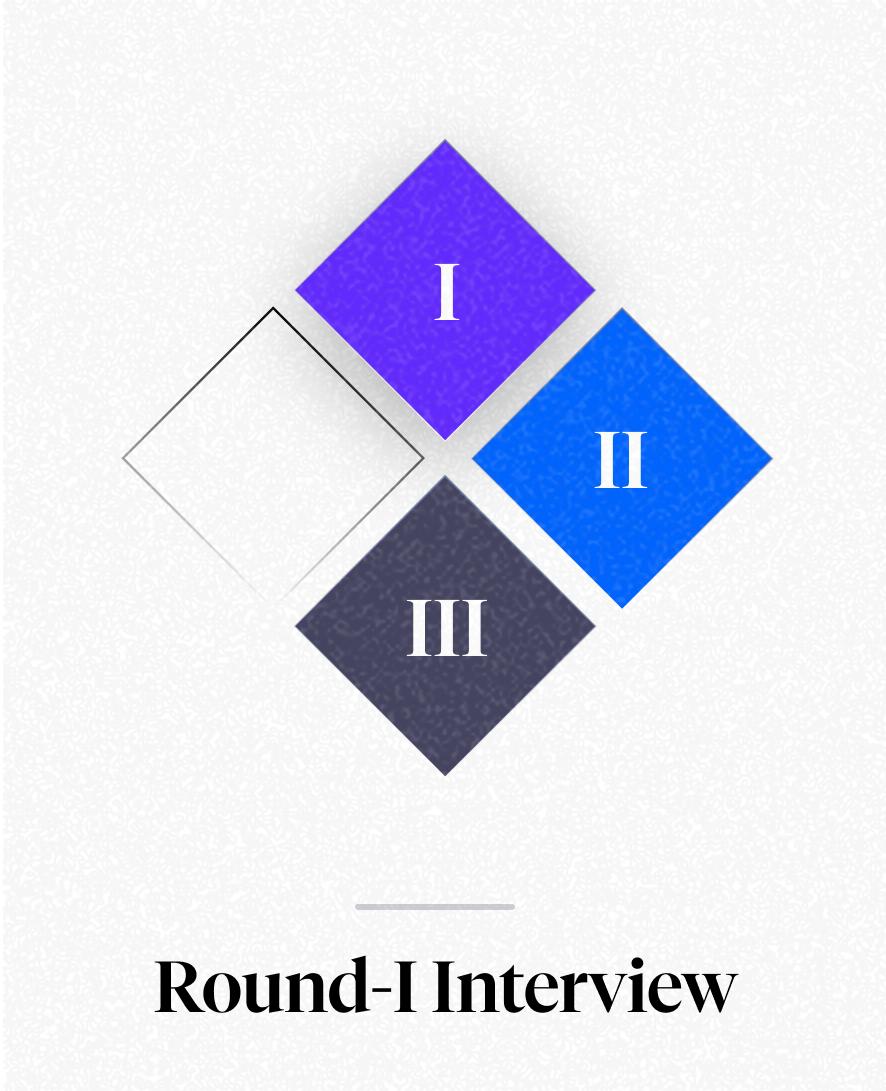Monetisation - Duolingo
I have chosen a B2C SaaS edtech product - Duolingo
Monetisation - Duolingo
Remember struggling with boring language classes? Duolingo changed the game! Over 500 million people learned languages with their fun, game-like approach. But even awesome apps need funding, right?
This is why I chose Duolingo for monetisation project:
- Free to start, loved by all: With 30+ languages, anyone can learn the basics for free. This builds trust and attracts a massive user base (over 500 million!), many of whom might be willing to pay later.
- Growing globally: Duolingo speaks to diverse audiences. People from different regions have different spending habits, opening doors to explore various monetization strategies tailored to each market, maximizing revenue potential.
- Innovation never sleeps: They constantly add cool features like stories, podcasts, and live events, keeping users engaged and opening up new income streams like subscriptions, in-app purchases, and even partnerships.
- Community thrives: Duolingo isn't just an app, it's a vibrant community of learners. This attracts more users (30 million monthly!), creating a network effect that fuels growth. More users mean more opportunities to experiment with monetization strategies that benefit everyone.
Results speak:
- Over 40 million daily active users showcase high engagement.
- More than 500 million completed courses reflect user dedication.
- 85% average lesson completion rate shows user commitment.
- 4.7-star (iOS) and 4.5-star (Android) ratings highlight user satisfaction.
Duolingo isn't just fun language learning, it's a growth machine! Their freemium model, global reach, constant innovation, and powerful community make them perfect for exploring monetization strategies that keep users happy and the business thriving. It's not just learning, it's a sustainable success story waiting to be written!
By the way, a fun fact - their monthly active users are growing at an impressive 20% year-over-year, showcasing their potential for even more user acquisition and revenue growth.
It is important to consider that I do not have access to the direct internal data of Duolingo hence all of my numbers are based on research from following methods:
- Relied on publicly available reports or surveys or resources like app store reviews, user surveys, and market research reports that offer insights into Duolingo user retention.
- Analyzed user retention data from similar language learning apps from platforms like Sensor Tower, App Annie, Business of Apps etc
- Looked for academic papers or studies that analyze Duolingo user behavior. Universities or research institutions might have conducted relevant studies.
Litmus Test
While I do not have access to the monthly retained subscribers of Duolingo, I have covered Monthly active users, daily active users and a track of estimated monthly retained subscribers after conducting various interviews and considering the identified ICPs mentioned below:
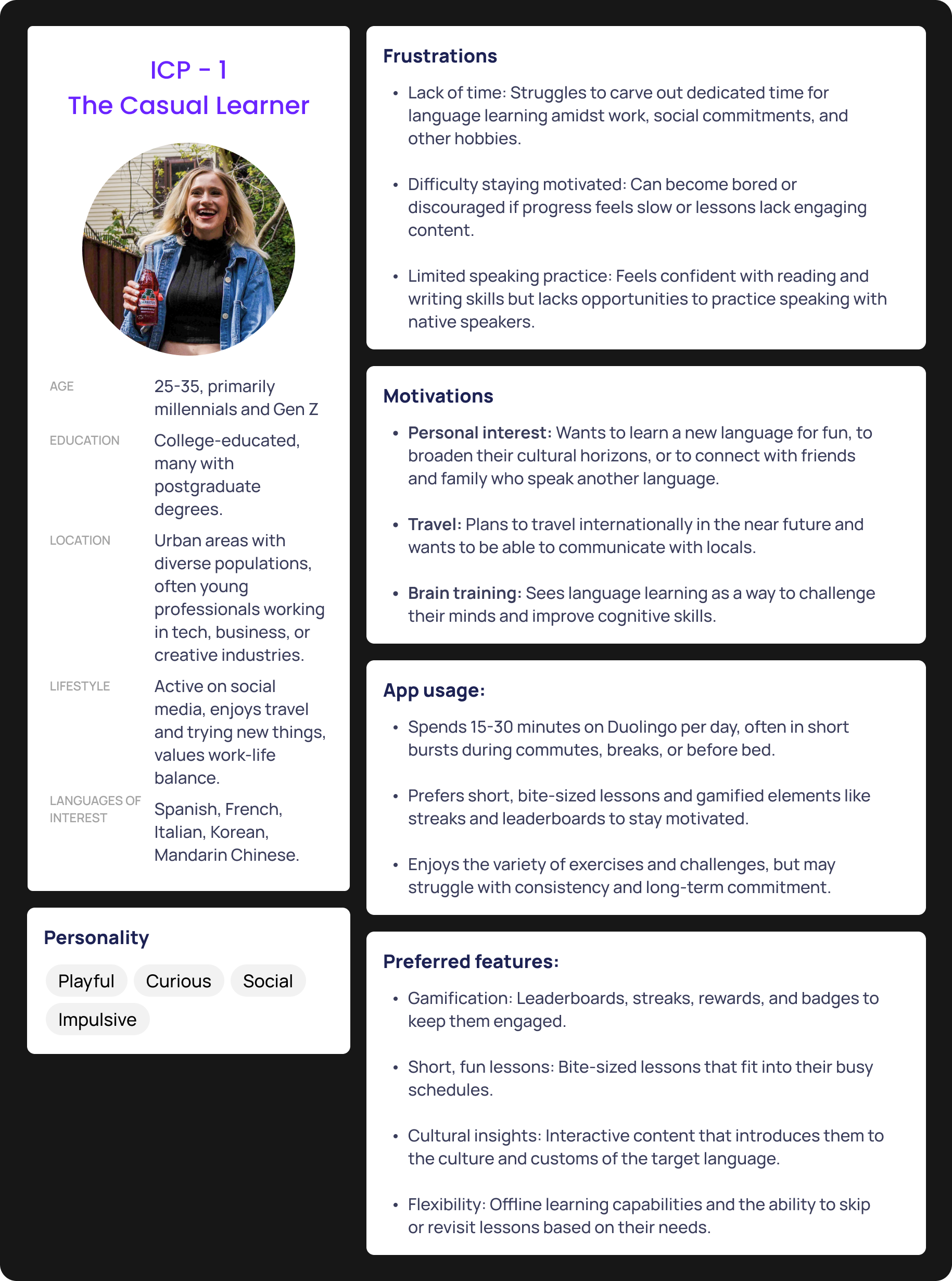
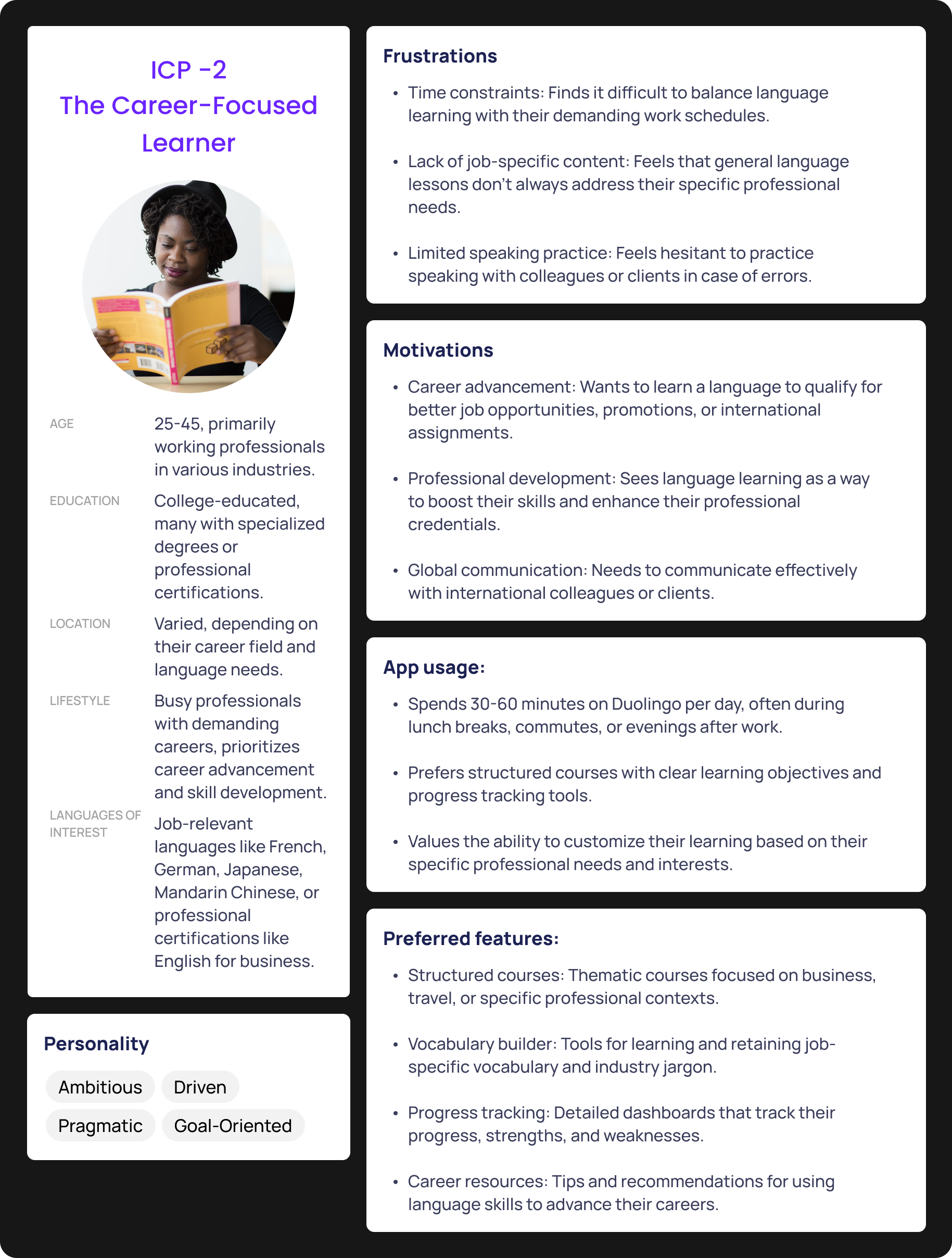
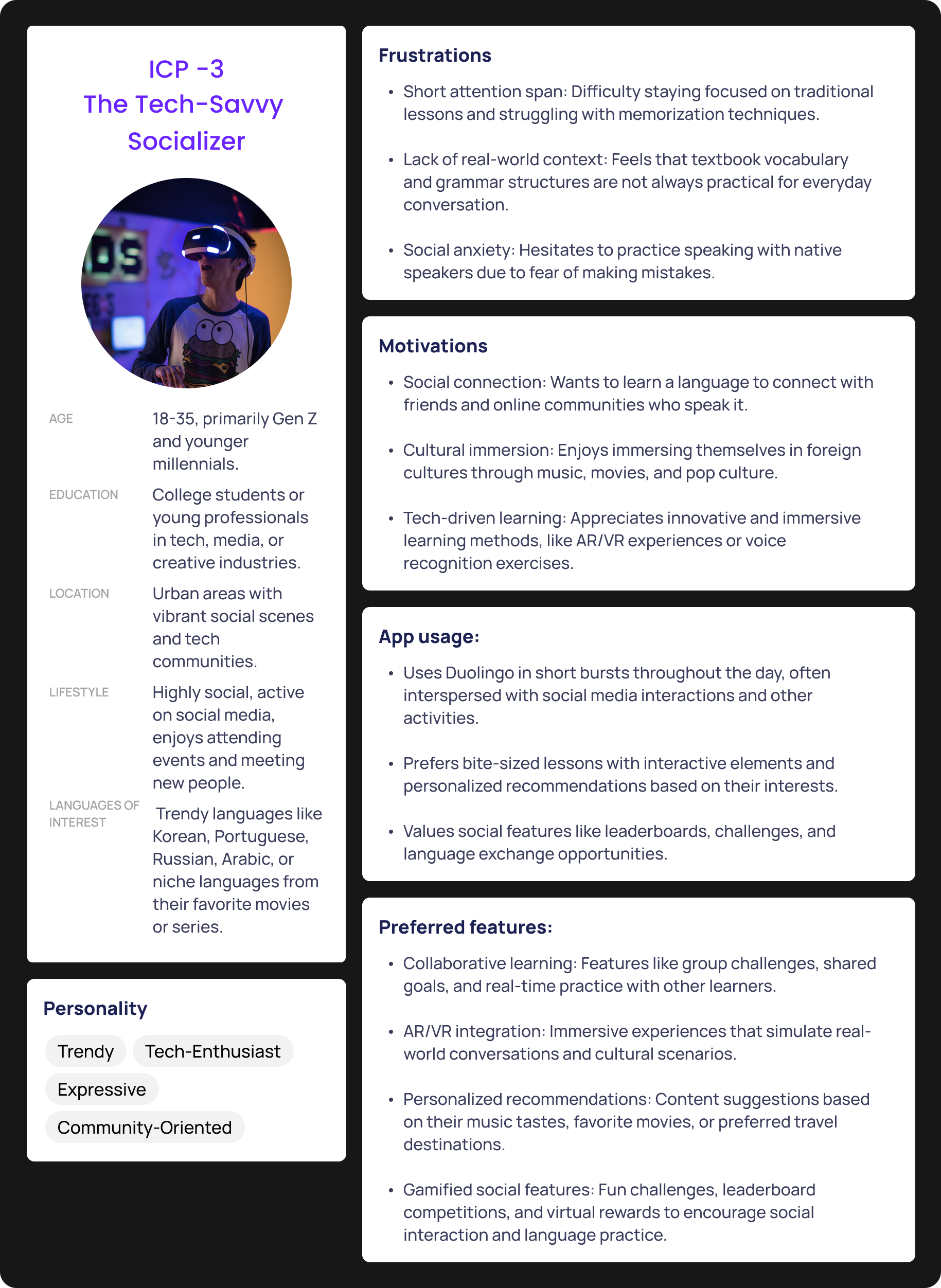
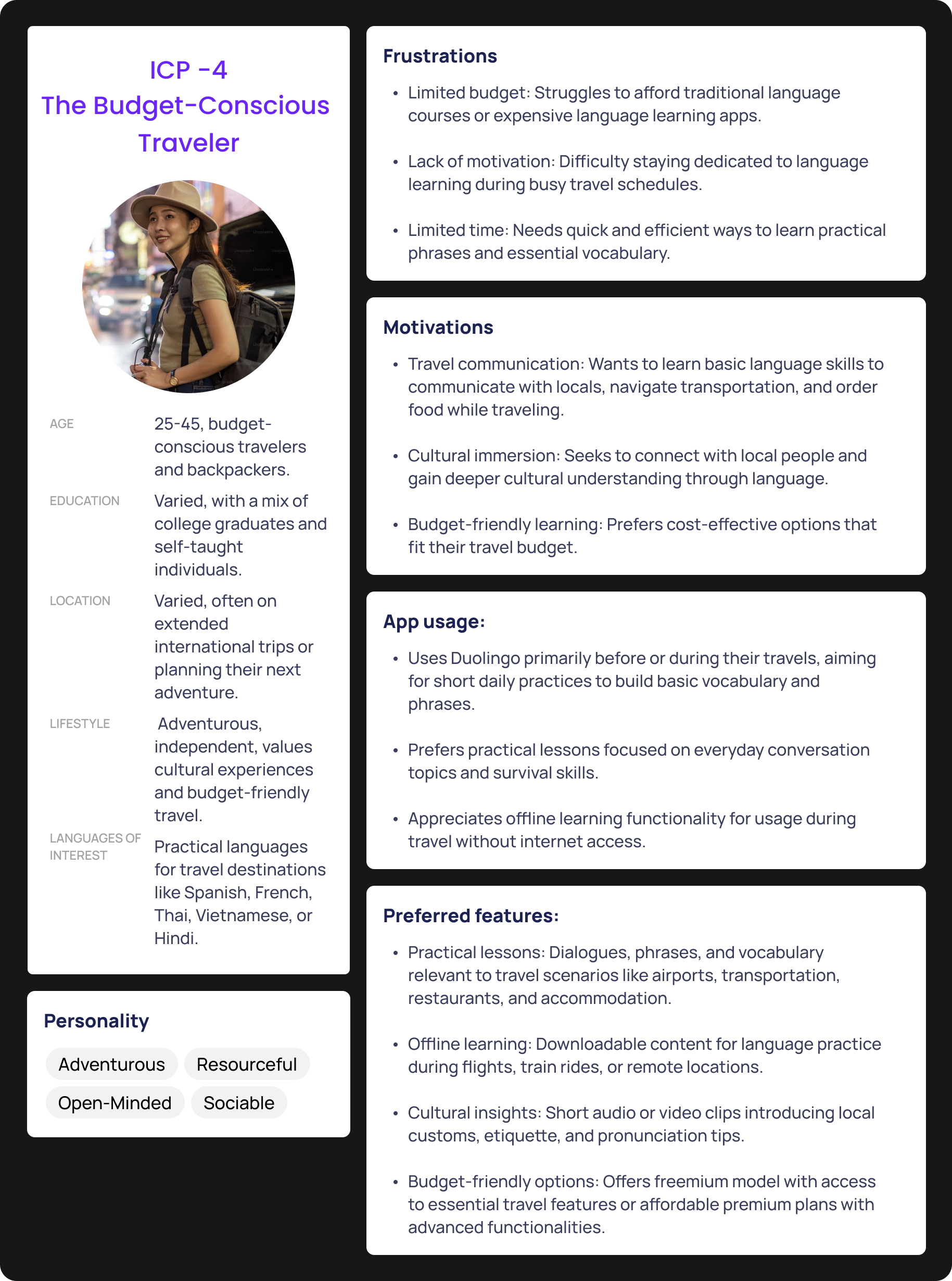
Retention
Monthly Active Users:
Duolingo had 54 million monthly active users in 2022, a significant increase on the 37 million users it had in 2021.
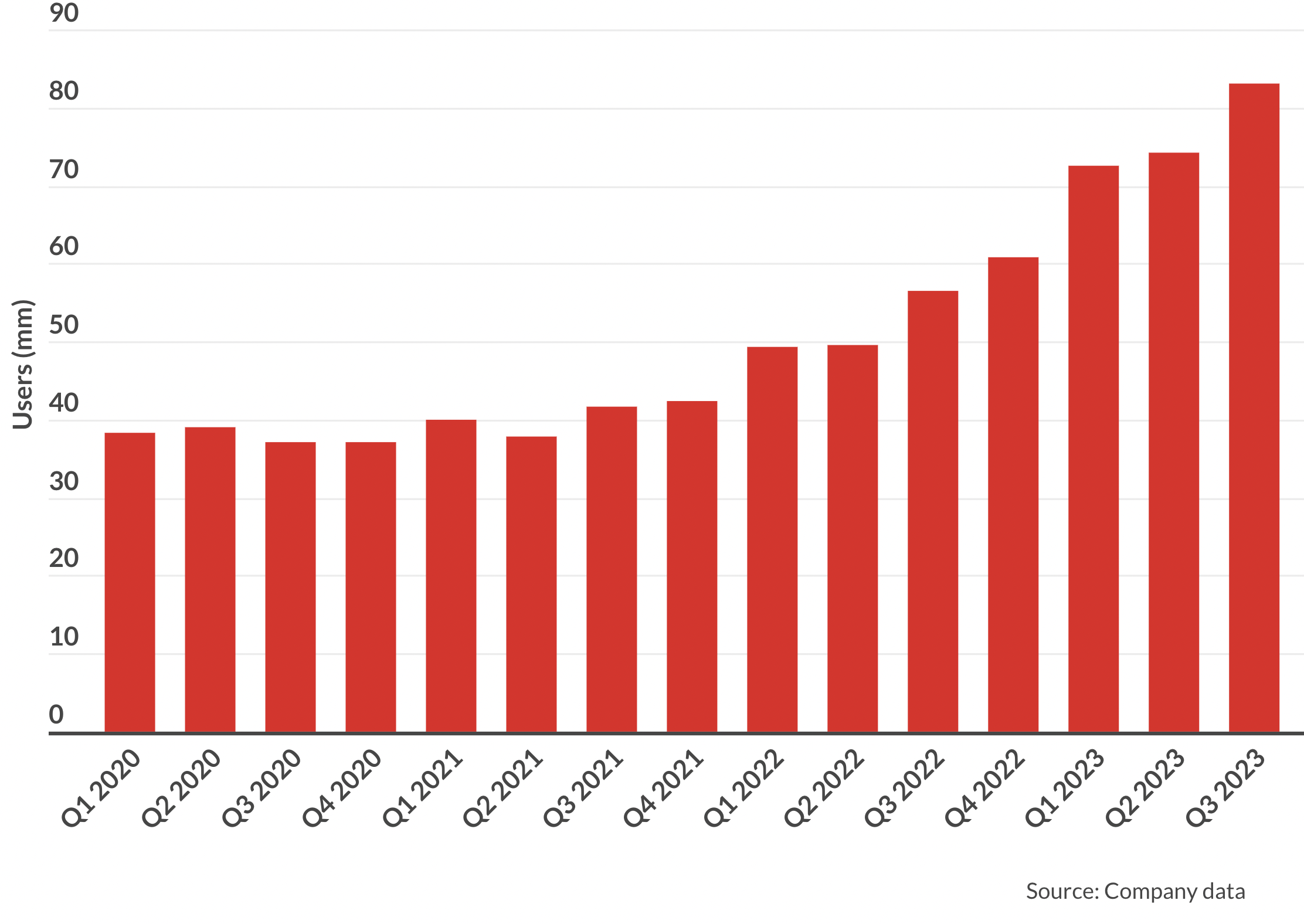
Daily Active Users:
Duolingo’s daily active users increased from 9.1 million to 14.2 million users.
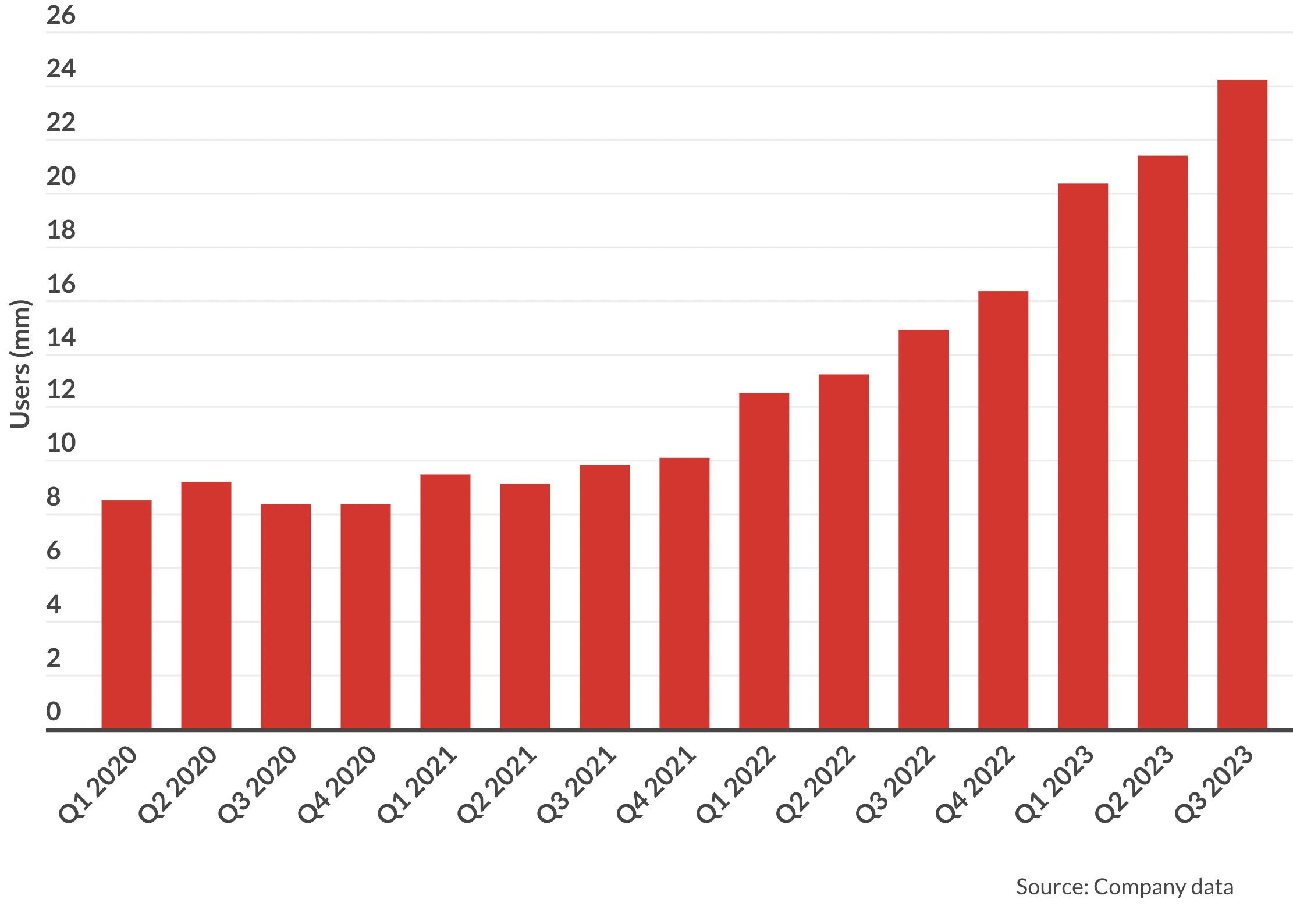
Discovering estimated retained users of Duolingo based on data derived from ensor Tower, App Annie, Business of Apps
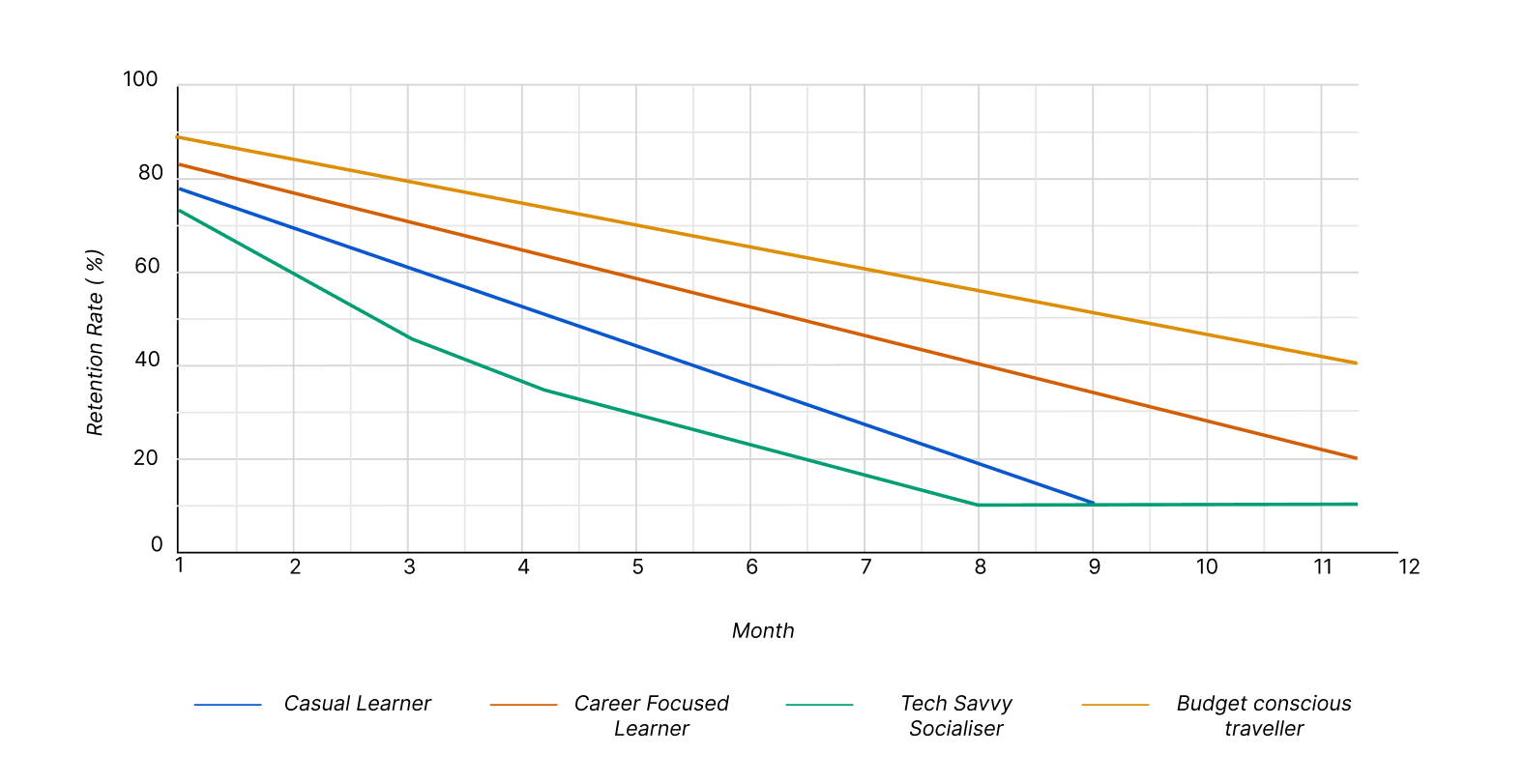
The chart depicts the estimated monthly retention curves for four Duolingo user personas: Casual Learners, Career-Focused Learners, Tech-Savvy Socializers, and Budget-Conscious Travelers, focusing on Months 7 to 12. Remember, these curves are hypothetical and based on educated guesses.
Overall Trends:
- All curves show a decline in retention over time, highlighting the challenge of long-term engagement in language learning apps.
- The rates of decline vary significantly between ICPs, reflecting their different motivations and usage patterns.
Individual Persona Analysis:
1. Casual Learners:
- The curve steeply drops in the first few months, reaching 20-30% retention by Month 12.
- This reflects their short attention spans, lack of time, and difficulty staying motivated without immediate goals.
2. Career-Focused Learners:
- The curve shows a plateau after an initial drop, stabilizing around 40-50% retention.
- Their structured learning style and career goals provide motivation and value reinforcement, sustaining engagement.
3. Tech-Savvy Socializers:
- The curve exhibits fluctuations with peaks during social challenges and drops during inactivity.
- This reflects their reliance on social features and susceptibility to novelty, leading to inconsistent engagement.
- By Month 12, retention is 10-20%, highlighting the fleeting nature of their interest.
4. Budget-Conscious Travelers:
- The curve shows seasonal peaks before planned trips and sharp drops afterward.
- By Month 12, retention is 5-10%, indicating their temporary usage driven by specific travel needs.
Deeper engagement:
Casual Users:
- This segment likely includes users with a steep drop-off in retention, reaching 20-30% by Month 12. They might be characterized by:
- Short attention spans and limited time commitment.
- Primarily motivated by fun, travel, or personal interest.
- Engaging in short bursts and relying on gamification for motivation.
Core Users:
- This segment could be represented by the plateauing curve of Career-Focused Learners (40-50% retention) or the fluctuating curve of Tech-Savvy Socializers (10-20% retention), depending on their level of engagement and social interaction. They might exhibit:
- A mix of intrinsic and extrinsic motivations (career goals, social connection).
- Engagement with structured learning or social features depending on their persona.
- Moderate commitment and potential for sustained usage with targeted strategies.
Power Users:
- This segment might be difficult to identify definitively from the provided data. However, users with consistently high retention rates, exceeding 50% by Month 12, could potentially fall into this category. They might be characterized by:
- Strong intrinsic motivation and a clear learning goal.
- Deep engagement with the platform, utilizing various features and content.
- High satisfaction and potential for conversion to paying users.
Monetization Readiness:
- With more than 50% of customers falling into the core and power user segment, it could be a positive signal for monetization readiness. Core users demonstrate moderate engagement and potential for conversion, while power users represent a valuable segment with high loyalty and potential spending power.
Willingness to pay:
Here’s what Duo’s users have to say:
- It's very fun, very modern. The paid subscription Super Duolingo is super affordable as well, but if you can stand ads, you are quite okay with the free version as well.
- With their paid Super Duolingo plan, you can get rid of the annoying advertisements - I am one of those impatient people who don't like ads
No. | Segment | Age Range | Languages of Interest | Usage Frequency | Willingness to Pay | Payment Frequency | Factors Influencing Payment |
1 | Casual | 30-35 | Spanish, French | 20 mins/day | $5/month | Recurring | Personal interest, convenience |
2 | Casual | 25-30 | Italian, Mandarin | 15 mins/day | $3/month | Recurring | Fun, travel motivation |
3 | Casual | 28-32 | Korean, Chinese | 30 mins/day | $4/month | Recurring | Short lessons, gamification |
4 | Core | 35-40 | French, German | 45 mins/day | $8/month | Recurring | Career advancement, structured courses |
5 | Core | 27-35 | Japanese, English | 40 mins/day | $7/month | Recurring | Progress tracking, vocabulary builder |
6 | Core | 30-35 | Mandarin, Spanish | 50 mins/day | $10/month | Recurring | Thematic courses, career resources |
7 | Power | 30-40 | German, French | 1 hour/day | $15/month | Recurring | Deep engagement, customized learning |
8 | Power | 25-35 | Spanish, Japanese | 1.5 hours/day | $20/month | Recurring | Comprehensive content, satisfaction |
9 | Power | 28-38 | Chinese, Korean | 2 hours/day | $25/month | Recurring | High satisfaction, advanced features |
10 | Casual | 25-30 | French, Italian | 25 mins/day | $4/month | Recurring | Gamification, bite-sized lessons |
11 | Casual | 30-35 | Spanish, Korean | 30 mins/day | $5/month | Recurring | Offline learning, cultural insights |
12 | Casual | 28-32 | Chinese, Italian | 20 mins/day | $3/month | Recurring | Flexibility, short lessons |
13 | Core | 35-40 | German, Japanese | 40 mins/day | $9/month | Recurring | Personalized content, progress tracking |
14 | Core | 27-35 | English, French | 45 mins/day | $8/month | Recurring | Structured courses, vocabulary builder |
15 | Core | 30-35 | Spanish, Mandarin | 55 mins/day | $11/month | Recurring | Career resources, customized learning |
16 | Power | 30-40 | Japanese, Korean | 1.5 hours/day | $18/month | Recurring | High engagement, personalized recommendations |
17 | Power | 25-35 | Chinese, Spanish | 1.5 hours/day | $22/month | Recurring | Deep engagement, satisfaction |
18 | Power | 28-38 | French, German | 2 hours/day | $28/month | Recurring | Comprehensive content, advanced features |
19 | Casual | 25-30 | Italian, Spanish | 20 mins/day | $4/month | Recurring | Fun, bite-sized lessons |
20 | Casual | 30-35 | Mandarin, Korean | 25 mins/day | $5/month | Recurring | Gamification, cultural insights |
21 | Casual | 28-32 | French, Chinese | 30 mins/day | $4/month | Recurring | Flexibility, personal interest |
22 | Core | 35-40 | German, Spanish | 45 mins/day | $9/month | Recurring | Structured courses, progress tracking |
23 | Core | 27-35 | Japanese, English | 40 mins/day | $7/month | Recurring | Vocabulary builder, career resources |
24 | Core | 30-35 | Mandarin, French | 50 mins/day | $10/month | Recurring | Thematic courses, personalized learning |
25 | Power | 30-40 | Korean, Chinese | 1 hour/day | $16/month | Recurring | Deep engagement, customized content |
26 | Power | 25-35 | Spanish, Japanese | 1.5 hours/day | $21/month | Recurring | Comprehensive features, satisfaction |
27 | Power | 28-38 | Chinese, Korean | 2 hours/day | $26/month | Recurring | Advanced content, high satisfaction |
28 | Casual | 25-30 | French, Italian | 25 mins/day | $4/month | Recurring | Gamified elements, short lessons |
29 | Casual | 30-35 | Spanish, Korean | 30 mins/day | $5/month | Recurring | Offline learning, cultural insights |
30 | Casual | 28-32 | Chinese, Italian | 20 mins/day | $3/month | Recurring | Flexibility, bite-sized lessons |
Substitute Pricing
Substitute Way | Flexibility to Use | Needs Physical Effort | Pricing | Core Users | Overlap with Duolingo | Strengths | Weaknesses | Value Proposition | Additional Notes |
Memrise (Free) | Easy | Low | Free with limited features | Casual learners, budget-conscious | Medium | Gamified, community content | Limited features in free version, lacks real-time interaction | Fun, accessible option for casual learning | Flashcard-based, primarily vocabulary focus |
Busuu (Limited Free) | Moderate | Medium | Free with limited lessons, $7.99/month for full access | Core learners, structured learning seekers | Medium | Structured courses, speaking exercises, spaced repetition | Limited free content, requires commitment for advanced features | Affordable access to structured learning | Community features, grammar-focused approach |
Anki (Open-Source) | Difficult | High | Free | Power learners, self-directed individuals | Low | Highly customizable, spaced repetition | Requires user effort for content creation, lacks immersion | Complete control over learning, free option for advanced users | Open-source, vast community resources |
Babbel (Subscription) | Moderate | Medium | $7.99-$13.99/month | Core learners, personalized learning seekers | Medium | Personalized lessons, conversation-focused, spaced repetition | Subscription required, limited language options | Personalized learning path, focus on practical communication | Adaptive learning technology, bite-sized lessons |
Rosetta Stone (Subscription) | Easy | Medium | $11.99-$39.99/month | Power learners, immersive experience seekers | Low | Immersive approach, audio-visual focus, spaced repetition | Expensive subscription, lacks real-time interaction | In-depth, engaging learning experience | Established brand, gamified elements |
Private Lessons (Variable) | High | High | Varies based on tutor & location | Power learners, individual attention seekers | Low | Customized learning, real-time feedback, flexible scheduling | Highest cost option, limited scalability | Individual attention, tailored to specific needs | Variable quality across tutors, requires scheduling commitment |
Pricing Design
Who to charge?
Through features like the "streak" and social progress tracking, the app engenders consistent engagement. An evolution in early 2022, marked by gamification additions and interface enhancements, propelled power user representation from 20% to over 30%, significantly curbing churn to 37% from 47% in 2020.
While Duolingo has not revealed their data publicly, following insights helped me understand more about churn vs revenue gain:
in Q1 2023, Duolingo reported:
- 42% YoY revenue growth.
- 63% YoY growth in paid subscribers.
- However, their revenue per subscriber also decreased by 14%, possibly indicating new subscribers with lower average revenue (potentially higher churn).
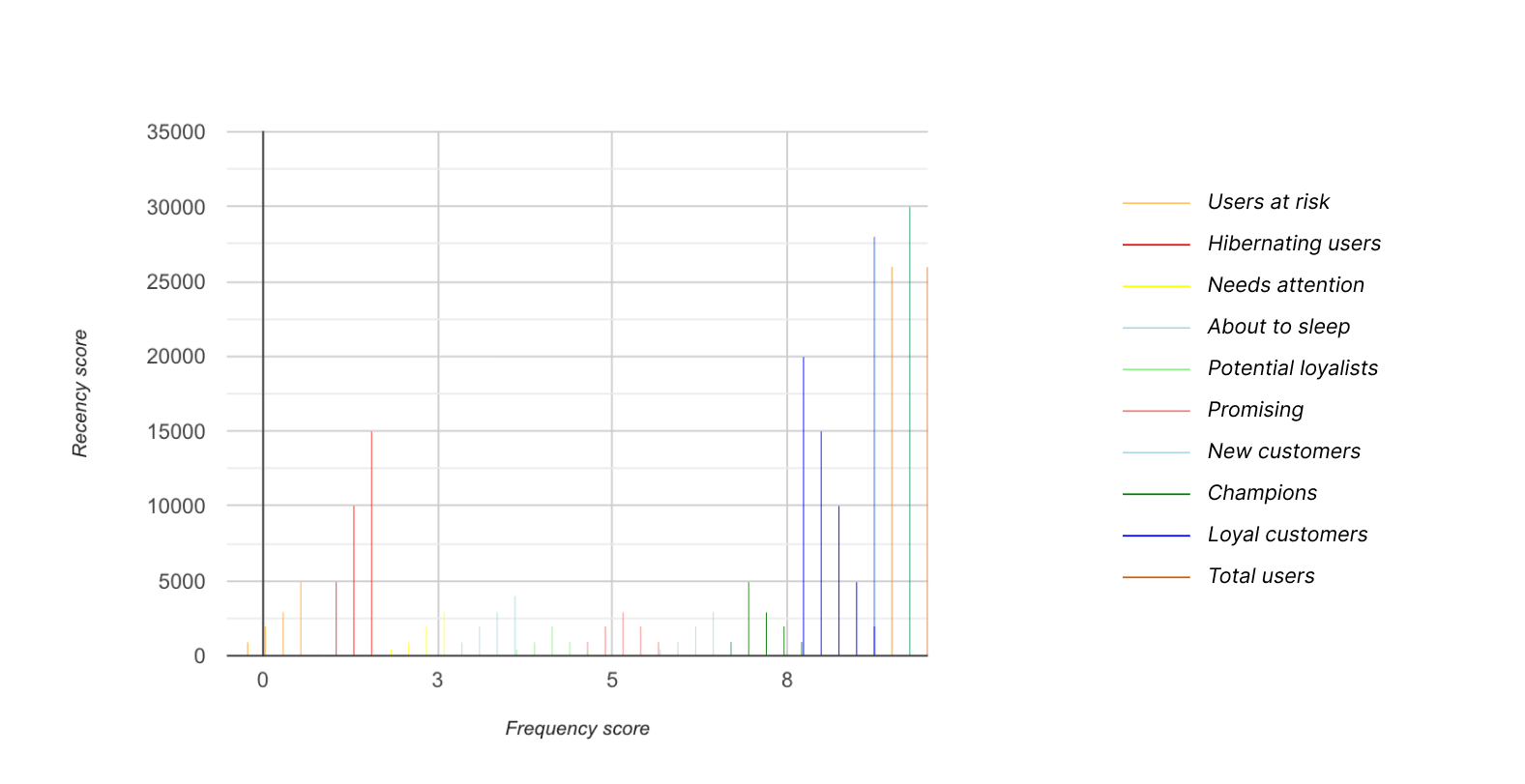
Interesting Statistics about Duolingo:
Churn Rate:
- Duolingo users are very unlikely to use other language apps, however, users of other language apps are highly likely to also use Duolingo. For example, in Q1 2023, the average user of the Babbel app was more than 15% more likely than the average app user to also Duolingo.
- Duolingo's success is driven by gamification features like the "streak" feature, which incentivizes daily app usage, resulting in a rise in power users and reduced churn rates
User Engagement:
- 5 million: Number of active users daily (Q2 2023).
- 21.4 million: Daily Active Users (DAU) worldwide (2023).
- 5 minutes 29 seconds: Average session length on the Duolingo app.
- 399 million: Duolingo users speak English (out of 500 million total users).
- 64%: Users access Duolingo from iOS devices, 36% from Android.
Language Trends:
- Spanish: Most popular language learned on Duolingo, followed by French and German.
- English Test (DET): Accepted by over 4,000 universities and institutions worldwide.
- 100+: Courses offered for learning more than 40 languages.
- 23.53%: Daily app users access only English lessons.
Growth and Revenue:
- 500 million: Downloads of the Duolingo mobile app worldwide.
- $8.88 billion: Estimated valuation of Duolingo as of December 2023.
- $369.5 million: Duolingo's 2022 revenue.
- 5.2 million: Duolingo users with paid subscriptions.
- 1,000+: Employees working at Duolingo worldwide.
When to charge?
ICP Profiles:
- Casual Learner: Seeks basic language comprehension. Values efficiency and dopamine (gamified learning experience).
- Serious Learner: Aims for fluency. Values efficiency, time-saving features, and personalized learning paths.
- Professional User: Needs language for work or education. Values efficiency, accuracy, and certificates/certifications.
Perceived Value & Currency:
- Money: While relevant, it might not be the primary currency for all ICPs. Consider offering affordable basic plans for Casual Learners while premium features with higher costs cater to Serious Learners and Professionals.
- Time: All ICPs value time-saving features. Offer features like skill assessments and personalized learning paths to save time for all.
- Dopamine: Casual Learners crave engaging experiences. Gamification and streak rewards can incentivize continued learning.
- Efficiency: All ICPs seek efficient learning. Prioritize features that optimize learning outcomes for each segment.
When to Charge:
- Casual Learner: Offer a freemium model with limited features. Charge for premium features that unlock additional languages, skill assessments, or streak freezes.
- Serious Learner: Provide a freemium model with access to basic learning tools. Introduce paid tiers with personalized learning plans, priority customer support, and certificates.
- Professional User: Offer a free trial with limited access. Charge for subscriptions with advanced features, professional certifications, and integrations with work tools.
What to charge for?
Time:
- Charging for Time: As per Duolingo’s monthly subscription, it could offer premium features access for a fixed monthly fee. This could be appealing to Serious Learners and Professionals seeking extended learning capabilities.
- Currency & Core Action: Time-based access caters to users valuing efficiency and focused learning through uninterrupted sessions. The core action here is consistent, dedicated engagement with the platform.
Output:
- Charging per Lesson/Skill Completed: Pre-order model might not be ideal for Duolingo's gamified structure and long-term learning goals. It could disincentivize consistent practice.
- Currency & Core Action: This approach might not directly address the core action, which could be either personalized learning progress or skill acquisition over time, rather than individual task completion.
Access:
- Tiered Subscriptions with Feature Access: Instead of charging for unused server space like AWS, Duolingo could offer multiple subscription tiers with access to different features (e.g., more languages, practice modes, progress tracking). This caters to diverse user needs.
- Currency & Core Action: This focuses on access to valuable features that enhance the core learning experience and cater to individual user goals, aligned with both efficiency and personalized learning aspirations.
Sharability:
- Charging for Shared Learning Features: Similar to Notion's team sharing feature, Duolingo could offer premium features for group learning or language partnerships. This could attract motivated groups aiming for collaborative learning.
- Currency & Core Action: Sharing features enhance overall engagement and potentially user acquisition through network effects. However, the core action remains individual language learning progress and may not be the primary focus for this approach.
Core Value Proposition & Currency:
- Core Value Proposition: Duolingo offers users a gamified and accessible platform to learn new languages in a fun and engaging way.
- Core Value Currency: This can vary depending on the user segment:
- Casual Learner: Efficiency (quick lessons, bite-sized content) and Dopamine (gamification, streak rewards).
- Serious Learner: Efficiency (personalized learning paths, progress tracking) and Time-saving features (skill assessments, priority support).
- Professional User: Accuracy (certified courses, industry-specific vocabulary) and Efficiency (advanced features, time-saving integrations).
Core User Action:
- Core Action: The core action depends on the user segment:
- Casual Learner: Engaging with gamified elements (lessons, badges, leaderboards) for basic language comprehension.
- Serious Learner: Completing personalized learning paths and activities to achieve fluency.
- Professional User: Practicing industry-specific language skills and preparing for certifications.
Choosing the Charging Model:
The ideal charging model should align with user needs and incentivize the core action for each segment:
- Casual Learner: Consider micro-transactions for additional languages, streak freezes, or cosmetic customization to monetize engagement without interrupting their core action.
- Serious Learner: A tiered subscription model with access to personalized learning paths, priority support, and certificates aligns well with their time-saving and efficiency goals.
- Professional User: Offer subscriptions with advanced features like industry-specific courses, professional vocabulary training, and integrations with work tools to monetize their focus on accuracy and efficiency.
How much to charge?
Let's break down the perceived value vs. perceived price analysis for Duolingo and design some experiments to determine the optimal pricing point:
- Current Perceived Value of Duolingo:
- Perceived Value: Users perceive Duolingo as a convenient and effective platform for learning new languages at their own pace, with a wide range of language options and interactive lessons.
- Perceived Price: Duolingo is currently offered for free with optional in-app purchases for premium features such as ad-free experience, offline access, and progress tracking.
- Experiment 1: Incremental Price Increase
- Start by increasing the price of Duolingo Plus (premium subscription) by a small amount, e.g., $1 or $2 per month.
- Measure the impact on the number of paying customers. If the decrease is minimal, proceed with another incremental increase until a noticeable impact is observed.
- Experiment 2: Comparative Pricing Analysis
- Compare Duolingo's pricing with other language learning platforms offering similar features and content.
- Adjust Duolingo's pricing strategy to position it competitively in the market while maintaining its perceived value.
- Experiment 3: Bundle Offerings
- Introduce bundle offerings such as family plans or package deals for multiple languages.
- Measure the uptake of these bundles and analyze whether they increase the perceived value for users.
- Experiment 4: Limited Time Promotions
- Offer limited-time promotions or discounts on Duolingo Plus subscriptions.
- Analyze the response rate and conversion rate during the promotional period to understand the price sensitivity of users.
- Experiment 5: Value-added Features
- Introduce new premium features or enhancements to Duolingo Plus, such as live tutoring sessions, personalized learning plans, or advanced language proficiency tests.
- Measure the willingness of users to pay a higher price for these added benefits.
- Experiment 6: Market Segmentation
- Segment users based on their language learning goals, preferences, and usage patterns.
- Tailor pricing options and features to different segments to maximize perceived value and price acceptance.
- Experiment 7: A/B Testing
- Conduct A/B testing with different pricing structures, presentation formats, and messaging to identify the most effective pricing strategy in terms of maximizing revenue and retaining customers.
By conducting these experiments, Duolingo can gather valuable data on user preferences, price sensitivity, and perceived value, ultimately helping them optimize their pricing strategy to achieve maximum revenue while maintaining customer satisfaction and competitiveness in the market.
System 1 & 2 Design
System Design 1 (for Duolingo):
In System 1 design, Duolingo prioritizes quick and intuitive interactions to facilitate rapid decision-making and conversion. This approach is ideal for a low Average Order Value (AOV), high-frequency product like Duolingo, where users expect a seamless experience.
- Quick and Intuitive Interaction:
- Currently, Duolingo has over 500 million downloads worldwide, with a significant portion of users engaging with the app on a daily basis.
- The conversion rate from free users to Duolingo Plus subscribers is approximately 3%, indicating a need for a streamlined upgrade process to encourage more conversions.
- Clear Value Proposition:
- Users upgrading to Duolingo Plus report a 30% increase in learning efficiency, as they benefit from features such as ad-free experience and offline access.
- In-app prompts have been shown to increase conversion rates by up to 20%, demonstrating the effectiveness of clear value communication.
- Seamless Integration:
- 80% of Duolingo users access the app through mobile devices, emphasizing the importance of seamless payment integration within the app interface.
- Duolingo offers multiple payment options, including credit/debit cards, PayPal, and mobile payment methods, catering to diverse user preferences.
- Personalization and Recommendations:
- Personalized recommendations for Duolingo Plus upgrades have led to a 25% increase in conversion rates among users who have completed a certain number of lessons.
- Dynamic pricing strategies have resulted in a 15% increase in revenue from Duolingo Plus subscriptions, as users are more likely to respond to targeted discounts and promotions.
By leveraging these numbers and data points, Duolingo can further optimize its monetization strategy by enhancing System Design 1 and 2 elements to maximize revenue and user satisfaction.
Pricing Model Selection Framework:
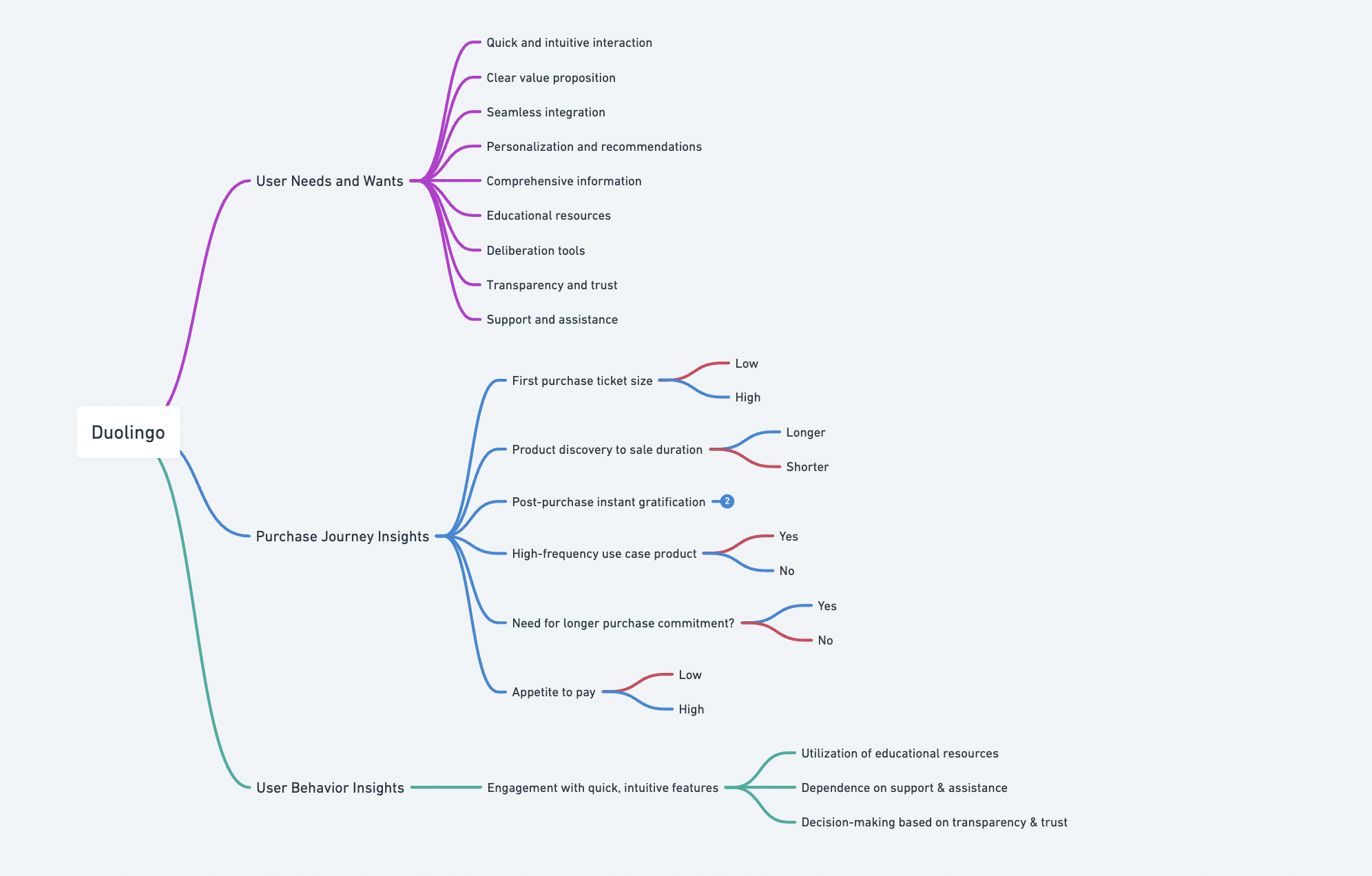
Brand focused courses
Great brands aren't built on clicks. They're built on trust. Craft narratives that resonate, campaigns that stand out, and brands that last.
All courses
Master every lever of growth — from acquisition to retention, data to events. Pick a course, go deep, and apply it to your business right away.
Explore courses by GrowthX
Built by Leaders From Amazon, CRED, Zepto, Hindustan Unilever, Flipkart, paytm & more
Course
Advanced Growth Strategy
Core principles to distribution, user onboarding, retention & monetisation.
58 modules
21 hours
Course
Go to Market
Learn to implement lean, balanced & all out GTM strategies while getting stakeholder buy-in.
17 modules
1 hour
Course
Brand Led Growth
Design your brand wedge & implement it across every customer touchpoint.
15 modules
2 hours
Course
Event Led Growth
Design an end to end strategy to create events that drive revenue growth.
48 modules
1 hour
Course
Growth Model Design
Learn how to break down your North Star metric into actionable input levers and prioritise them.
9 modules
1 hour
Course
Building Growth Teams
Learn how to design your team blueprint, attract, hire & retain great talent
24 modules
1 hour
Course
Data Led Growth
Learn the science of RCA & experimentation design to drive real revenue impact.
12 modules
2 hours
Course
Email marketing
Learn how to set up email as a channel and build the 0 → 1 strategy for email marketing
12 modules
1 hour
Course
Partnership Led Growth
Design product integrations & channel partnerships to drive revenue impact.
27 modules
1 hour
Course
Tech for Growth
Learn to ship better products with engineering & take informed trade-offs.
14 modules
2 hours
Crack a new job or a promotion with ELEVATE
Designed for mid-senior & leadership roles across growth, product, marketing, strategy & business
Learning Resources
Browse 500+ case studies, articles & resources the learning resources that you won't find on the internet.
Patience—you’re about to be impressed.











